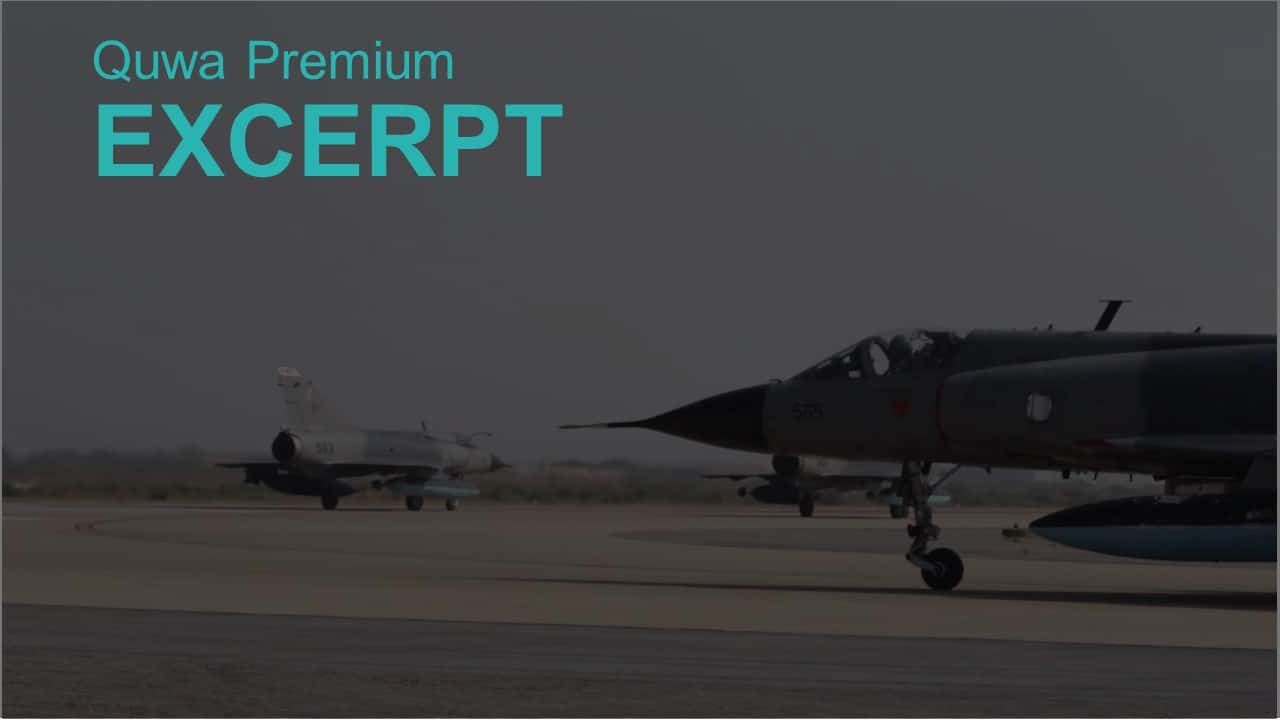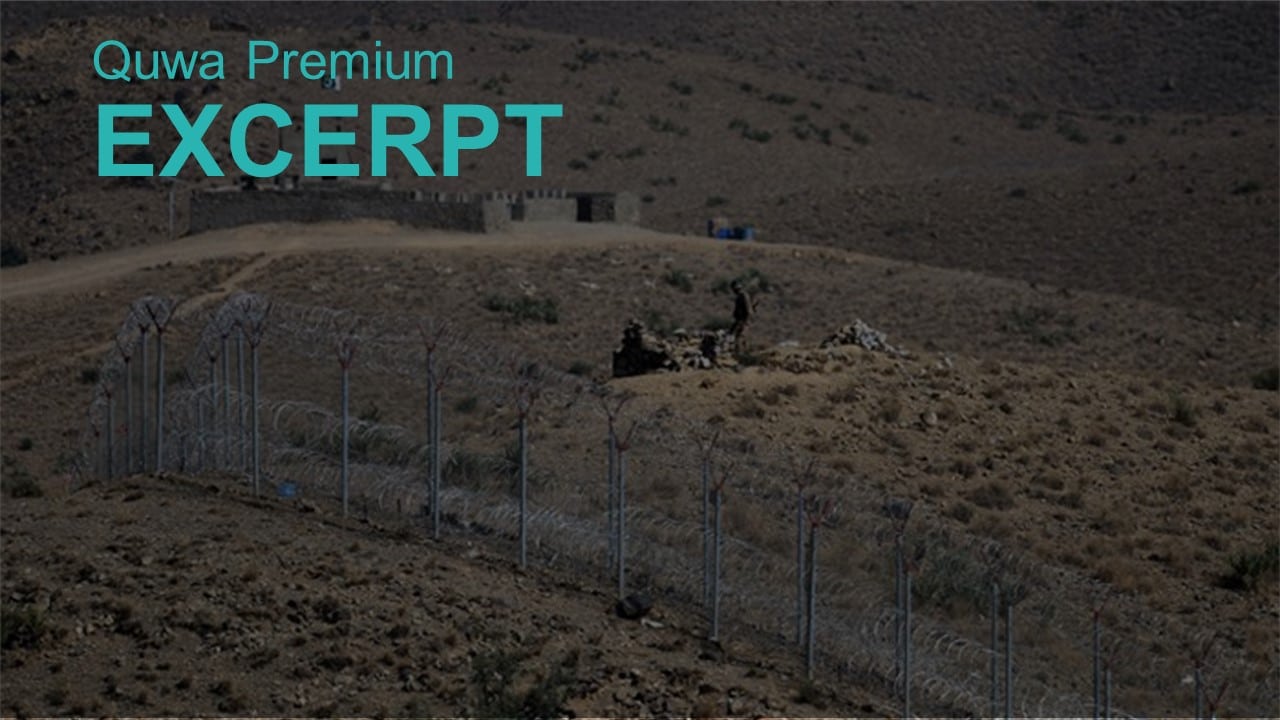5735Views

Pakistan’s Push to Replace Legacy Air Platforms
The following article is a section from an upcoming quarterly report on the Pakistan Air Force’s (PAF) modernization plans, which will be available to Quwa Premium subscribers on 29 March 2024.
In a public relations video released in January 2024, the PAF said that Air Headquarters (AHQ) made the “strategic decision to phase out legacy systems” while showing footage of the Dassault Mirage III and 5, Chengdu FT-7P, Karakoram Eagle (KE) airborne early warning and control (AEW&C) aircraft, and CN-235 light transport aircraft.[1] Overall, the PAF is working to phase out older aircraft and, at least among its special mission aircraft, consolidate its fleets.
Fighter Aircraft
The PAF’s push to replace the F-7P, FT-7P, and F-7PG as well as Mirage III/5 is not surprising. In 2016, the PAF stated that it aimed to replace 190 legacy fighters by 2020.[2] Then Chief of Air Staff (CAS), Air Chief Marshal (ACM) Sohail Aman added that the PAF sought to maintain a 400-strong fighter fleet so that it could hold a 1:1.35 to 1:1.75 ratio against the Indian Air Force (IAF).[3]
The promotional video suggests that the PAF is now pressing ahead with replacing its legacy fighters. While it did not disclose a revised timeline, it appears that the complete shift away from the F-7 and Mirage III/5-series could take place in the short-term, i.e., the next three to five years, or 2030 at the latest. The new fighters will comprise of the J-10CE and the JF-17C (Block-III) in an interoperable high-low mix. Currently, the PAF has 20 J-10CE and 30 JF-17Cs, but Quwa expects that the PAF will acquire additional airframes across both fighter types through the 2020s.
But in November 2023, reports emerged of the PAF speaking to the Aviation Industry Corporation of China (AVIC) for an unspecified number of Hongdu L-15Bs for a lead-in-fighter-trainer (LIFT) need. In fact, the PAF sought a new LIFT since at least 2017 to better prepare its pilots for 4/4+ generation jets like the J-10CE, JF-17, and F-16. The PAF had originally planned to use the JF-17B for this role in 2015, but in 2017, it pivoted to seeking a separate platform. Interestingly, the PAF laid out that its new LIFT should have an afterburning engine, multimode radar, and tactical datalink (TDL).[4]
The PAF’s LIFT requirements point to a fully functional fighter, and on that front, the L-15B delivers…
End of excerpt. Subscribe to Quwa Premium to read the rest of this section.
Special Mission Aircraft
The apparent plan to retire the KE AEW&C was unexpected. Inducted in 2009, the KE pairs the ZDK03 PESA radar to the Shaanxi Y-8F600 turboprop-powered transport aircraft. The KE has been a key part of the PAF’s maritime operations, where the PAF deployed the AEW&C in joint maneuvers with the Pakistan Navy (PN). It appeared that the KE was interoperable with the PN’s assets.
Moving forward, it seems that the PAF is standardizing on the Saab 2000-based Erieye AEW&C. The PAF had originally planned to only operate the Erieye in the early 2000s. However, in the late 2000s, it complemented its fleet of four aircraft with four KEs from China. In 2012, the PAF had lost three of its four Erieye AEW&C to a terrorist attack on Minhas Air Base. Ironically, the four KEs were a critical asset for the PAF as it filled the coverage gap caused by the loss of Erieye AEW&Cs.
By 2016, the PAF restored its Erieye fleet to its original strength of four aircraft and, in 2017, ordered another three aircraft. This was followed by an order for at least two additional systems in 2020, the deliveries of which took place from 2020 to 2023. Thus, the PAF has a total of nine Erieye AEW&Cs…
End of excerpt. Subscribe to Quwa Premium to read the rest of this section.
Logistics Aircraft
It also appears that the PAF is phasing out its four CN-235 light transport aircraft. Since acquiring the original batch in 2005, the PAF did not grow the CN-235 fleet with additional units…
End of excerpt. Subscribe to Quwa Premium to read the rest of this section.
End of Excerpt (537/1,312 words)
You can read the complete article by logging in (click here) or subscribing to Quwa Premium (click here).
For more insights on the Pakistan Air Force:
- Pakistan Air Force’s Air Defence Development
- Pakistan Air Force Announces Interest in Shenyang J-31
- Pakistan is Reportedly Negotiating for the L-15B Trainer from China
- Analysis: Why is Pakistan Pursuing the TF-X KAAN Fighter?
- Pakistan Looks to Use Drones as Strike Assets
[1] “PAF Checkmates Pakistan’s Enemies.” Pakistan Air Force (PAF) Press Release. 16 January 2024. URL: https://www.youtube.com/watch?v=V_2Osf0r-p4&ab_channel=PakistanAirForce
[2] “Pakistan Air Force Needs to Replace 190 Planes by 2020.” Dawn News. 15 March 2016. URL: https://www.dawn.com/news/1245714/pakistan-air-force-needs-to-replace-190-planes-by-2020
[3] Bilal Khan. “Pakistan’s Next – Near-Term – Steps for Bridging Airpower Gap.” Quwa. 25 March 2018. URL: https://quwa.org/2018/03/25/pakistans-next-near-term-steps-for-bridging-airpower-gap/
[4] Alan Warnes. Interview. Air Chief Marshal Mujahid Anwar Khan, Chief of the Air Staff, Pakistan Air Force. IHS Jane’s Defence Weekly. 22 May 2019.


